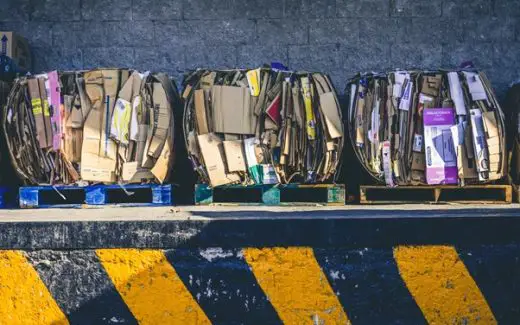Importing construction materials into Australia benefits, Architects and Developers building material advice
Importing Construction Materials Into Australia: A Complete Guide for Architects and Developers
22 May 2025
In today’s construction industry, sourcing building materials from overseas is not just a trend. It is often a necessity. Architects and developers increasingly look beyond local suppliers for aesthetic, financial, or performance-driven reasons. From Italian stone to high-performance façade systems from Germany or prefabricated units from Southeast Asia, the right materials can transform a project’s potential.
However, importing construction materials into Australia brings serious logistical, regulatory, and timing challenges. What looks perfect on paper can unravel quickly if customs clearance, certification, or freight timelines are overlooked.
That is why architects, builders, and project managers across Australia partner early with MCC World International. Their expertise in freight logistics and customs processes ensures your materials arrive safely, comply with regulations, and are delivered according to schedule.
The Importance of Planning Ahead When Importing Building Materials
When an architect specifies an overseas product, they are not just choosing an aesthetic. They are setting in motion a chain of procurement, compliance, and delivery. Every link in that chain must align with the project timeline, from manufacturing and export to customs clearance and final delivery to the construction site.
Too often, logistics are treated as someone else’s job. But if the imported product causes a delay or fails to meet compliance, the project lead may be left scrambling for solutions. Planning import logistics early allows for smarter scheduling, cost control, and reduced risk.
Documentation You Will Need to Import Construction Materials Into Australia
Importing materials into Australia involves a range of documentation. Common requirements include commercial invoices, bills of lading, packing declarations, import declarations to the Australian Border Force, and sometimes fumigation certificates or certificates of origin. For certain materials, technical specifications or safety compliance documentation are also necessary.
Missing or incorrect paperwork can result in delays, detention, or even the rejection of the shipment. Many construction professionals reduce this risk by working with a licensed customs broker who manages document preparation and submission.
Understanding Compliance with Australian Building Standards
Australian regulations are strict when it comes to construction imports. Products must comply with the National Construction Code and relevant Australian Standards depending on their purpose. Items like fire doors, insulation, cladding, structural steel, and glass systems often require verified compliance.
Using non-compliant materials can lead to fines, stop-work notices, or forced removal and replacement. Architects should confirm that any imported material includes proper certification before finalizing specifications. When in doubt, consulting a freight partner for a compliance check can prevent future issues.
How Long It Takes to Import Construction Materials
Timing is a critical factor in any import. Shipments from China typically take between two to four weeks by sea. Europe-based shipments often require six to eight weeks. Materials from North America generally arrive within four to six weeks. However, transit is only part of the equation.
You must also factor in customs clearance, local transport, unloading coordination, and potential delays due to port congestion or weather. Realistically, end-to-end delivery may take between six and twelve weeks. Aligning construction timelines with these freight windows helps avoid downtime or costly rescheduling.
Choosing the Right Freight Method for Your Materials
The ideal freight method depends on the nature of your materials and the urgency of your timeline. Full container loads offer efficiency for high-volume shipments. Less-than-container loads are more flexible but carry a higher risk of delay. Air freight is fast but costly and best reserved for high-value or urgently needed components. Multimodal freight combines several methods to accommodate projects in more remote or restricted locations.
Choosing the wrong method can inflate costs or disrupt timelines. Partnering with a freight expert like MCC World International ensures that the method suits your specific project needs.
Final Delivery Challenges in Urban Environments
Even after clearing customs, final delivery can present challenges, particularly in cities like Sydney or Melbourne. Urban job sites often have narrow access points, limited staging space, strict delivery schedules, and local council requirements.
If the delivery truck arrives outside the allowed window or without a permit, materials may be turned away. This leads to further delays and unexpected costs. MCC World International manages these scenarios by coordinating closely with site managers, local councils, and delivery crews to ensure smooth handoffs.
What Happens When Things Go Wrong
In one recent Sydney project, a developer specified European-manufactured glazing systems. While compliant in Europe, the materials did not come with the proper Australian documentation. Customs officials detained the shipment until the correct certificates were sourced, verified, and translated.
This delay lasted six weeks and led to more than thirty thousand dollars in detention fees and storage charges. The builder also faced labor rescheduling costs and client penalties. The entire issue could have been avoided with early compliance review before the order was placed.
The Role of Architects and Developers in the Import Process
While architects and developers may not handle shipping directly, their decisions determine what gets imported and when. Material selection affects everything from freight planning to customs paperwork. By understanding the realities of importing construction materials, project leads can make smarter decisions that benefit the entire build.
Awareness of these logistics issues also strengthens communication with clients and contractors, creating smoother collaborations across the board.
How MCC World International Supports Your Build
MCC World International provides end-to-end support tailored for construction professionals. Services include early-stage import consulting, compliance verification, document management, customs clearance, and delivery coordination. Their team works closely with architects and project managers to ensure that imported materials are delivered legally, safely, and on time.
With experience across residential towers, commercial buildings, and infrastructure developments, MCC brings the insights and reliability that large-scale builds demand. To learn more or request help with your current project, visit MCC World International.
Final Thoughts: Why Logistics Should Be Part of Every Design Conversation
Specifying imported materials opens the door to creative and cost-effective design. But without a solid logistics plan, those same materials can cause major headaches. By planning ahead, consulting with experts, and choosing freight methods that fit your build, you ensure that your project stays on time and on budget.
Whether you are building high above the skyline or deep in regional Australia, a logistics partner can help you turn your architectural vision into reality. Importing construction materials should be a strategic advantage – not a logistical gamble.
Comments on this guidee to Importing construction materials into Australia benefits article are welcome.
Property
Home Improvement Posts
Construction
Construction Waste Posts
Ways to deal with construction waste

How to manage construction waste sustainably
How Skip Hire Helps with Home Improvement
Make These 12 Low-Waste Swaps for a Greener Lifestyle
Comments / photos for the Importing construction materials into Australia benefits page welcome.







